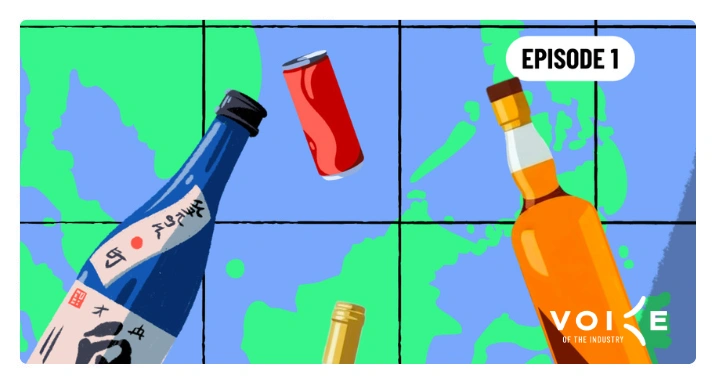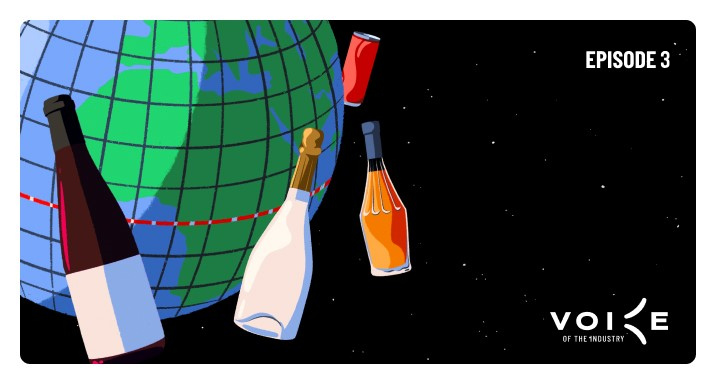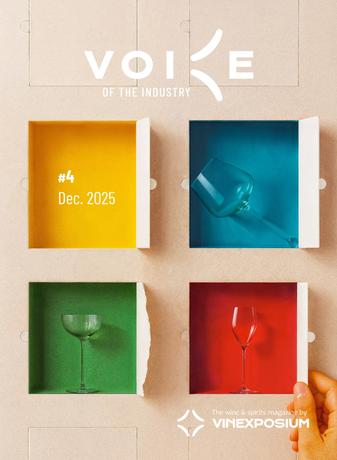Europe’s Wine and Spirits Market in Transformation, According to Circana’s Silent Revolution of Beverages Study
Europe’s drinks landscape is undergoing a transformation that would have been almost unthinkable a decade ago. Once dominated by traditions of wine, beer, and spirits, the market is now being redrawn by health-conscious consumers, digital culture, and new ideas about what it means to enjoy a drink.By Jérémy Campy – Do You Speak Wine
According to Circana’s Silent Revolution of Beverages analysis, which draws on consumer panel data and sentiment insights across Europe, the continent’s out-of-home drinks market reached €157 billion in the year to June 2025. Cafés, restaurants, pubs and bars served an astonishing 50 billion beverages. Yet behind these impressive figures lies a deeper shift: alcohol is losing ground, while moderation and innovation are fuelling growth.
Alcohol in decline, moderation on the rise
The numbers tell a sobering story. Across Europe, alcohol consumption in foodservice outlets fell by 6%, while retail volumes dropped by 1.7%, equivalent to 285 million fewer litres. Value sales also slipped, down 1.5% (around €1 billion) compared to last year.
This is more than a temporary dip. It reflects a generational movement towards reduced alcohol intake, with younger Europeans leading the way. They are turning to beverages that are refreshing, healthier, and aligned with wellness culture. Retail sales of non-alcoholic drinks rose 5.5% in value (+€4 billion) and 2.3% in volume, representing an additional 1.5 billion litres sold.
The cultural shift is unmistakable. From after-work mocktails to kombucha nights and CBD spritzes, drinking occasions are increasingly curated with moderation in mind. More than half of Europeans (55%) now expect non-alcoholic beer to be a standard option in bars and restaurants — a remarkable turnaround.
Uneven fortunes for wines and spirits
Within alcohol, the picture is uneven. Wine, long considered Europe’s cultural anchor, is losing ground. Its heritage-rich image struggles to resonate with younger audiences who value novelty, functional benefits, and visual appeal. Both volumes and values are falling, and while premium wines retain loyal customers, the mainstream market is shrinking.
Spirits, however, show more resilience. The standout performer is ready-to-drink (RTD) cocktails, which grew 6.5% in value (+€145 million) and represent the only alcohol category in growth. Their success comes from combining convenience with variety, delivering lighter drinking experiences that fit modern lifestyles.
For spirits makers, innovation pays. New flavours, lower-alcohol formats, and collaborations with soft drinks are creating fresh momentum. For wine, the challenge is sharper: how to reconnect with a generation that views beverages as tools of identity, wellness, and self-expression.
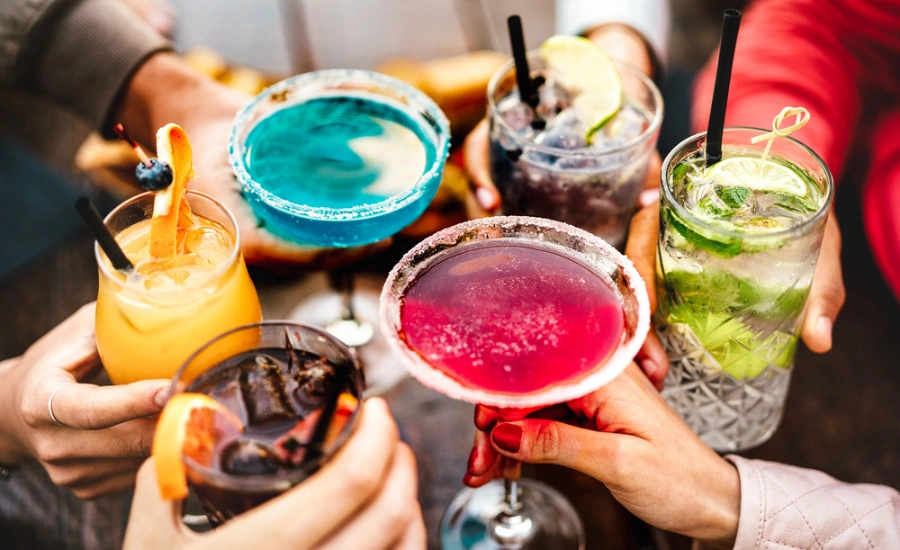 Adobe Stock
Adobe Stock
A wellness and digital revolution
Circana highlights that Europe’s most dynamic beverage trends originate not in vineyards or distilleries but in cafés and on TikTok. Colourful iced teas, fermented cold brews, ginger shots and “smart sodas” enriched with vitamins or prebiotics are reshaping menus. These drinks are designed to be photographed and shared as much as consumed.
For 18–34-year-olds, beverages are no longer just thirst-quenchers — they are lifestyle accessories. As Edurne Uranga, VP of Foodservice Europe at Circana, explains: “Drinks today are about so much more than quenching thirst – they’re a form of self-expression, a mood booster, and a way to support lifestyle goals.”
This shift also explains the pressure on traditional soft drinks. Zero-sugar sodas, functional beverages and natural energy blends are outperforming their full-sugar rivals, expanding into consumption moments that once belonged to alcohol.
Blurring boundaries, new opportunities
Circana underlines a critical point: category boundaries are dissolving. Alcohol brands are expanding into low- and no-alcohol variants, while soft drink companies are moving into traditionally alcoholic spaces with sophisticated, adult-oriented flavours.
The trend is also visible at home. The rise of “insperiences” — recreating out-of-home drinking rituals at home — has boosted sales of cocktail kits, barista-style beverages, and even virtual wine tastings. Consumers still value conviviality, but they want it to be more flexible, personalised, and often lighter on alcohol.
As Ananda Roy, Senior Vice President of Global Thought Leadership at Circana, notes:
“Blurring category boundaries is becoming essential for growth. Alcohol brands are expanding into low and no-alcohol options to reach health-conscious and younger consumers, while soft drinks are pushing into traditional alcohol spaces.”
The challenge for wine
For the wine sector, Circana’s study is a clear wake-up call. Declining sales across Europe cannot be ignored, and without adaptation, wine risks losing its central place in European drinking culture.
Opportunities do remain. Premiumisation continues to attract discerning consumers who value authenticity, heritage and craftsmanship. Innovation in packaging, smaller formats, alcohol-free extensions, and storytelling that links wine to sustainability or creativity could help reconnect with younger generations.
Yet the competition is no longer just other wines or spirits. Today, wine competes with functional teas, RTD cocktails, and wellness-driven sodas that embody identity and lifestyle. To thrive, wine needs to present itself not only as a cultural treasure but as a relevant, versatile companion for modern life.
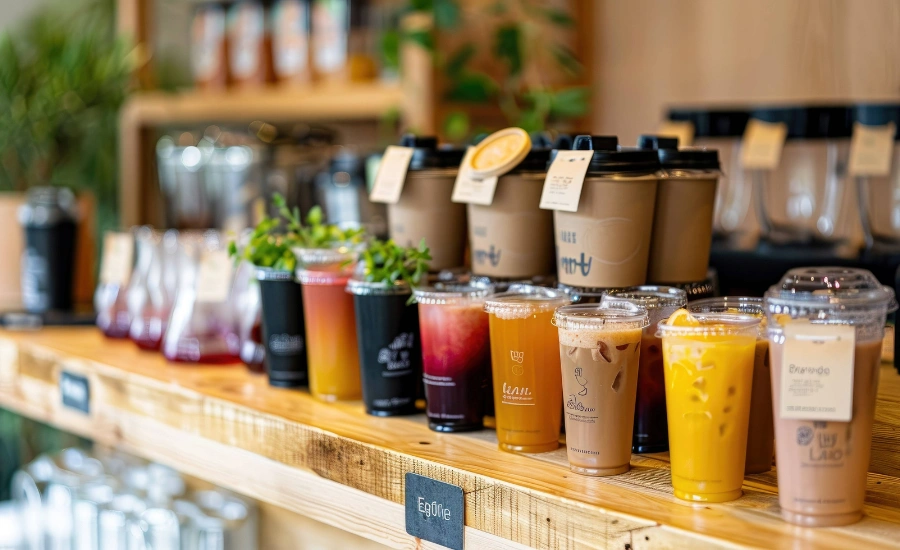 Adobe Stock
Adobe Stock
A silent revolution
Europe’s drinks market is not shrinking — it is evolving. Consumers are not abandoning conviviality but redefining it. They want drinks that deliver experiences, reflect individuality, and align with healthier living.
For wine and spirits producers, the message is clear. Tradition remains a strength, but it must be paired with innovation and openness to cross-category experimentation. Those who embrace moderation as an opportunity, rather than a threat, will be best placed to succeed in this new era.
Because in 2025, Europeans are not drinking less.
They are drinking differently.
About the Study:
Circana’s Silent Revolution of Beverages analysis draws on CREST® consumer panel data and Foodservice Consumer Sentiment insights for the first half of the year to June 2025, covering the UK, France, Spain, Italy, and Germany.
About Circana:
Circana is a leader in providing technology, AI, and data to fast-moving consumer packaged goods companies, durables manufacturers, and retailers seeking to optimize their businesses. Circana’s predictive analytics and technology empower clients to measure their market share, understand the underlying consumer behaviour driving it, and accelerate their growth. Circana’s Liquid Data® technology platform is powered by an expansive, high-quality data set and intelligent algorithms trained on six decades of domain expertise.
With Circana, clients can take immediate action to future-proof and evolve their growth strategies amid an increasingly complex, fast-paced, and ever-changing economy. Learn more at circana.com.


